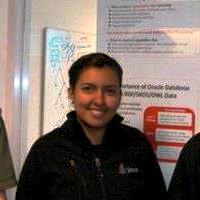|
|
Thursday, August 22, 2013 
02:00 PM - 02:45 PM
| Level: | Technical - Intermediate
|
Graph and NoSQL are both hot areas of activity, and are seriously considered for Big Data modeling and storage, respectively. Graph, a different data modeling paradigm than the traditional relational and XML data modeling, provides intuitive and flexible data construction, manipulation, query and navigation. NoSQL, in turn, is a database repository, providing an excellent storage architecture that is distributed, horizontally scalable and fault tolerant. We believe that integration of the Graph data model with the NoSQL storage model can provide a robust and massively scalable platform for managing Big Data. In this talk, we will share our first-hand experience in implementing RDF Graph (a W3C standards-based Graph language) capabilities on the Oracle NoSQL Database, a K/V based, distributed and horizontally scalable platform. The following key areas will be covered: - Modeling of RDF Graph data, triples and quads, in a K/V database;
- Efficient RDF Graph data loading and SPARQL graph query processing;
- Support of tools including the integration of:
- Protege, a very popular open-source ontology editing UI tool,
- TrOWL, an efficient OWL 2 reasoner,
- OBIEE, an enterprise grade business intelligence tool, and
- Perspectives, a commercial visualization tool from Tom Sawyer.
Zhe Wu is an architect working on semantic and graph technologies in Oracle USA. He leads the design and development of the inference engine for W3C RDFS/SKOS/OWL in the database, Java APIs for RDF Semantic Graph, RDF triple-level security, SQL-based graph analytics, RDF Graph for Oracle NoSQL Datatabase and more. As an Oracle representative, he has participated in the W3C OWL 2 and RDF working groups. He has previously served as a member of the program committee for ESWC 2011, OrdRing 2013, ISWC 2010-2013, RR 2010, OWLED 2008-2013. Zhe has served as co-chair for JIST 2011 and he has served on the editorial board of SWJ 2010 (special issue on real-world applications of OWL). He has also served on UDDI standard committee from 2003 to 2005. Zhe received his PhD in computer science from the University of Illinois at Urbana-Champaign in 2001. He received his BE from the Special Class for Gifted Young, University of Science & Technology of China in 1996.
Gabriela Montiel Moreno is a Senior Member of Technical Staff for Oracle in the Semantic Technologies Group. She participates in the development of RDF Graph features over NoSQL Databases. She received her Master in Computer Science from the Universidad de las Américas-Puebla (UDLAP) in Mexico where she focused her research in applications for autonomic data integration based on semantics. Her research interests include Semantic Web technologies, data integration, autonomic computing, and computational logic.
Dr. Jay Banerjee manages the development of several Oracle database products and features, including Oracle Spatial, Multimedia and Semantic Technologies. Through his 30 year career in software development, Dr. Banerjee has initiated and shipped many new products in the field of database systems, both as an engineer and as a manager. He has worked at Unisys in St. Paul, then at MCC, the Austin-based software research consortium, and at Digital Equipment Corporation in Nashua, NH. Since 1994, he has been a part of Oracle at the Nashua development center. His work has resulted in numerous patents, and he has published widely in industry and academic conferences and journals. His current interests include the development of spatial technology for traditional businesses and governments, application of map-reduce technologies to high performance data analysis, and application of semantic web and linked-data concepts to model, manage and analyze complex relationships within businesses.
|
|
|



